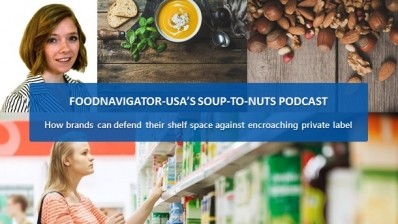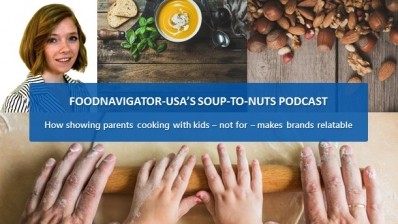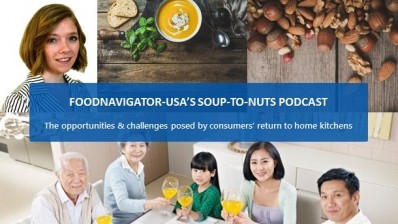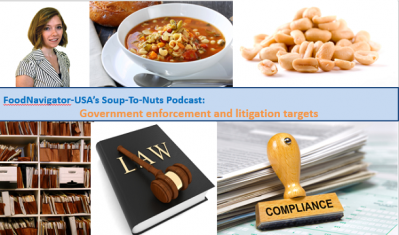Soup-To-Nuts Podcast: Defining and meeting consumer demand for clean label
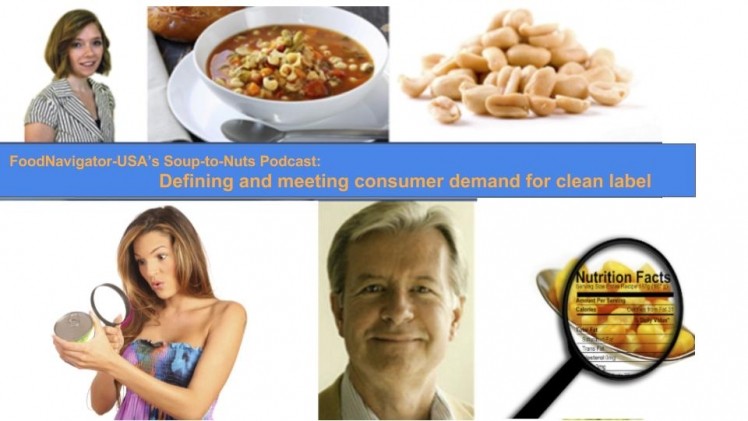
But what exactly do consumers want when they look for clean labels and how can suppliers and manufacturers looking to tap into this trend know when they’ve hit or missed their mark?
In this episode of FoodNavigator-USA’s Soup-To-Nuts podcast, Carl Jorgensen, the director of global thought leadership and wellness at the brand building firm Daymon Worldwide explains, “clean is not a defined term -- just like natural,” but often what consumers seek with clean label are products with “shorter ingredient lists with ingredients that they are familiar with.”
They often use free-from claims as stand-ins for “clean labels,” which is more of an industry term than consumer phrase, he added.
“They are looking for the absence of artificial colors, flavors or preservatives, as well as being absent of hormones, antibiotics and GMOs,” Jorgensen said.
“MSG is another big one even though the chemistry of many food recipes results in MSG occurring naturally as sodium and glutamic acid combine during cooking. Also, ingredients that sound like chemicals tend to be distrusted by consumers, even if in some cases they are benign,” he added.
This trend -- and consumers’ broad approach to defining “clean” -- poses a challenge for manufacturers to communicate more fully about their ingredients, including their function and source, to consumers, Jorgensen said.
Achieving clean labels
But meeting consumers’ clean label desires is “far from an impossible task for the food industry,” Jorgensen said.
On one hand, he explained, “some research indicates that self-identified clean eaters are willing to accept some level of processing in their food,” giving manufacturers a bit of wiggle room.
On the other hand, “the toolkit for flavors, ingredients and processing aids to achieve a clean label is getting increasingly robust,” Jorgensen said.
“Food technology has responded” to the clean label trend “with creativity and innovation to develop a robust toolkit for manufacturers to swap out artificial for natural ingredients,” Jorgensen said. For example, he noted, “Deli meats and jerky can now be effectively preserved with plum extract instead of nitrates. Blue food colorings is one of the biggest challenges and now very attractive blue colors are available derived from spirulina.”
He added: “In most cases, the performance of these new clean ingredients matches the older-artificial ones.”
Balancing risks and opportunities with clean label
The way the trend is manifesting on packaging claims does raise some risks for companies, but it is substantially less than that posed by natural claims, which is a close movement that shares many of the same end-goals, Jorgensen said.
“Clean label is usually communicated as a free-from proposition, and specifically promises that can be validated. It is not a vague concept like natural,” he said. “Of course,” he added, “you need to make sure if you are saying gluten-free, for example, that your product has less than 20 parts per million of gluten, or if you are claiming non-GMO that your product will test at less than 0.9% GMO content. But these are specific and verifiable metrics, and if they are properly executed they represent much safer ground than natural claims.”
The clean label movement also offers opportunities, which Jorgensen suggests outweigh the risks in many cases. Specifically, he notes, “the biggest opportunity is creating trust -- that is the holy grail of marketing.”
He explained that the clean label movement shows consumers that brands and manufacturers “are their partner in their wellness journey,” by providing products that have everything they need and nothing they don’t.
Therefore, Jorgensen advises companies: “Take credit for the steps you have taken to clean up your legacy food brands, or if it is a new product, tell the world how clean it is. … If you can show your customer that you are their partner in their wellness journey then you have got them.”
